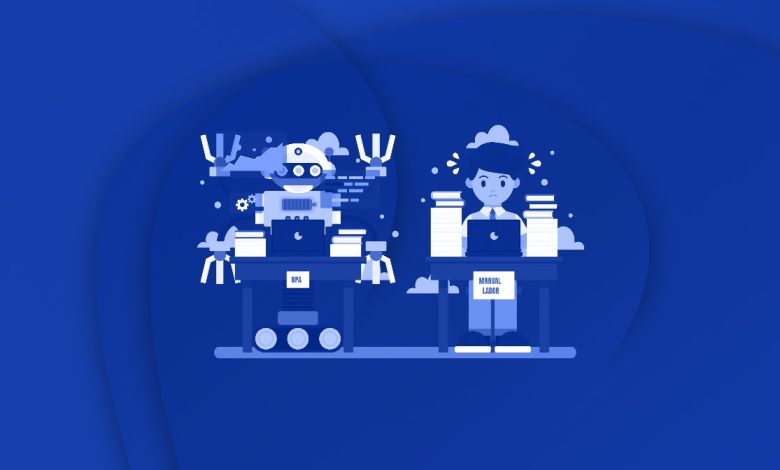Is AI Ready for Real-World Jobs?

Is AI Ready for Real-World Jobs?
Artificial Intelligence (AI) has made significant strides in recent years. Many industries are exploring its potential to enhance productivity and efficiency. However, a critical question arises: is AI ready for real-world jobs? This article examines AI’s capabilities, its impact on the workforce, and the challenges it faces.
1. Understanding AI’s Capabilities
AI encompasses various technologies, including machine learning, natural language processing, and computer vision. These technologies enable machines to perform tasks that typically require human intelligence. For instance, AI can analyze data, recognize patterns, and make decisions. This capability opens doors to new applications in various sectors.
2. AI in the Workplace
Many businesses have started integrating AI into their operations. For example, AI-powered chatbots are now common in customer service. They can answer inquiries, process orders, and provide support. This automation reduces the workload on human employees, allowing them to focus on more complex tasks.
In addition, AI is used in data analysis. Companies leverage AI algorithms to analyze large datasets quickly. This process provides valuable insights that can guide decision-making. As a result, organizations can make informed choices based on real-time data.
3. Enhancing Productivity
One of the primary benefits of AI in the workplace is increased productivity. By automating routine tasks, AI frees up time for employees to engage in higher-value activities. For instance, AI can handle administrative tasks, such as scheduling meetings and managing emails.
Moreover, AI tools can assist in project management. They can track progress, allocate resources, and identify potential bottlenecks. This support allows teams to work more efficiently, improving overall project outcomes.
4. AI in Healthcare
The healthcare industry is another sector benefiting from AI. Medical professionals use AI to analyze patient data and assist in diagnosis. AI algorithms can detect patterns in medical imaging that may go unnoticed by human eyes.
For example, AI can help radiologists identify tumors in X-rays or MRIs. This capability enhances diagnostic accuracy and reduces the risk of misdiagnosis. Additionally, AI can personalize treatment plans based on individual patient data, improving patient outcomes.
5. Impact on Employment
Despite the benefits of AI, concerns about its impact on employment persist. Many fear that AI will replace human jobs. While it is true that some roles may become obsolete, AI also creates new opportunities.
Jobs that involve repetitive tasks are most at risk of automation. For instance, assembly line jobs in manufacturing may decline due to robotic automation. However, AI also generates demand for skilled workers in AI development and maintenance.
6. Reskilling the Workforce
As AI continues to evolve, reskilling the workforce becomes essential. Employees need to adapt to new technologies and acquire new skills. Organizations must invest in training programs to help workers transition to roles that complement AI.
For example, workers in customer service can learn how to collaborate with AI tools effectively. By understanding how to leverage AI, they can enhance their performance and provide better service. Reskilling initiatives empower employees to thrive in an AI-driven environment.
7. Ethical Considerations
The integration of AI into the workplace raises ethical concerns. Issues such as bias in algorithms, data privacy, and transparency need to be addressed. For instance, if an AI system is trained on biased data, it may produce discriminatory outcomes.
Organizations must prioritize ethical AI practices. This includes regularly auditing algorithms for bias and ensuring data is collected and used responsibly. By addressing these concerns, businesses can build trust in AI technologies.
8. Limitations of AI
While AI has many advantages, it also has limitations. AI lacks emotional intelligence, which is vital in many jobs. For example, roles in counseling or therapy require empathy and understanding. AI cannot replicate these human qualities.
Furthermore, AI systems can struggle with complex problem-solving. They rely on data patterns, which may not always apply to unique situations. As a result, human judgment remains essential in many fields.
9. Collaboration Between Humans and AI
Rather than viewing AI as a replacement, we should see it as a collaborator. AI can enhance human capabilities and support decision-making. For example, financial analysts can use AI to analyze market trends, allowing them to make more informed investment choices.
In creative fields, AI can assist artists and designers in generating ideas. By using AI tools, professionals can explore new concepts and push the boundaries of creativity. This collaboration leads to innovative outcomes that combine human creativity and AI efficiency.
10. The Future of AI in the Workplace
The future of AI in real-world jobs looks promising. As technology advances, AI will become more sophisticated. We can expect AI to take on more complex tasks, further integrating into various industries.
However, successful integration requires careful planning. Organizations must focus on employee training and ethical considerations. By addressing these factors, businesses can harness the full potential of AI while supporting their workforce.

11. Preparing for an AI-Driven Future
To prepare for an AI-driven future, individuals must embrace lifelong learning. Acquiring new skills and staying updated on technological advancements is crucial. Online courses, workshops, and certifications can help individuals remain competitive in the job market.
Additionally, companies should foster a culture of innovation. Encouraging employees to experiment with AI technologies can lead to new ideas and solutions. This proactive approach ensures that organizations stay ahead in a rapidly changing landscape.
12. Conclusion
AI is making significant inroads into the workforce. While it brings many benefits, challenges remain. The question of whether AI is ready for real-world jobs does not have a simple answer. AI can enhance productivity, support decision-making, and automate tasks.
However, human judgment, creativity, and empathy remain irreplaceable. As we move forward, collaboration between humans and AI will define the future of work. By embracing AI responsibly, we can create a work environment that maximizes efficiency and innovation.
In summary, AI is not a replacement but a partner in the workforce. The future will be shaped by how we integrate AI into our jobs while preparing ourselves for the changes ahead.





